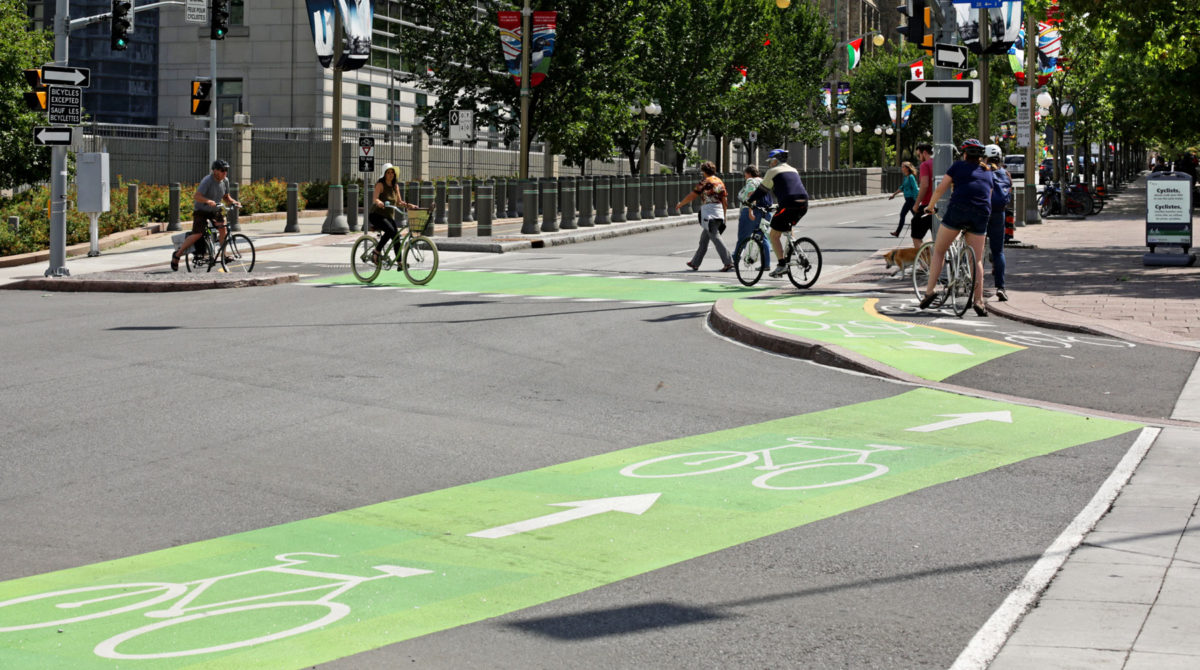“Five Big Moves” of Ottawa’s new Official Plan

City staff should be congratulated for setting an ambitious goal with the “Five Big Moves” of Ottawa’s new Official Plan. These are, indeed, big moves for the city. But creating the built environment is a political act. How will our local politicians approach these five planning goals?
The first goal seeks more growth by intensification than by greenfield development. (Greenfield development converts untouched or agricultural land to residential, industrial or commercial use.) What this means is smarter intensification within the core and drastic limitations on expansion of the suburban boundary. It means that carefully wrought Community Design Plans for infill development in the core must be respected. Development charges and planning applications for projects within the core must be more attractive than projects in the suburban areas.
We need more of the smaller mixed-use projects that create housing affordability and support small businesses on traditional main streets to create smart density that supports walkable, bikeable communities. Planning committee needs to be balanced to represent the city as a whole, and planning applications, including subdivision plans, for new greenfield development need to effectively stop. Which of our political leaders will have the courage to take this bold action?
The second goal is that by 2046, the majority of trips in the city will be by sustainable transportation.
The current city budget undermines this goal: It includes road widenings and new roads, making it easier to commute by car. There is no discussion of congestion pricing, road tolls or other models to reduce private vehicle use. If we want to achieve the goal of sustainable transportation, we need to lower transit fares, build more protected bike lanes, increase parking fees, and add congestion pricing. Which of our city councillors will advocate for these measures?
Third on the list is to improve our sophistication in urban and community design. This includes recognizing Ottawa as the nation’s capital, respecting our diversity, cultivating our image, nurturing and protecting our heritage.
Current city building projects are decided based on a conventional “Request for Proposal” model that emphasizes price. This drives down innovation and creativity. City building projects, like Lansdowne Park, the ByWard Market, LeBreton Flats or any of our libraries, community centres or civic institutions should be the result of design competitions. The Urban Design Review Panel should be strengthened with a broad, locally represented, membership across a greater cross-section of building types. The city can reform its own procurement policies and stimulate the private sector to achieve similar goals. Is council prepared to challenge procurement departments and legal staff and champion design excellence?
Last fall, city council voted to declare a climate emergency. The relationship between the built environment and public health is enshrined in the fourth goal of climate, energy and public Health.
Our infrastructure is weakened by decades of underfunded investment in preventative maintenance, decided by politicians aiming to keep tax increases low. We are vulnerable to weather events and we set low targets for city-owned buildings instead of striving for zero carbon or net zero energy. We need to transform city-owned building to wean ourselves from an energy-heavy, carbon dependent infrastructure. Do we have the political will to meaningfully lead this change?
Economic development, the last of the big five moves, drives how our city is funded. The location of jobs and access to affordable housing and transit steers growth in key areas of the city.
We have to recognize the impact suburban housing has relative to urban development: longer commutes and scarcity of housing affordability reduce the viability of a livable city. Replacing on-street parking with bike lanes brings more economic activity; burying overhead hydro lines increases the amount of available space for redevelopment. Sustainable buildings, walkable neighbourhoods and improved access to parks, libraries and cultural spaces improve quality of life and economic growth. Our politicians need to see this connection and advocate to act, not impede the necessary investments.
Meanwhile, reference to Indigenous culture occurs twice – but in only one of the 44 policy directions. How do we embed the “Calls to Action” of the Truth and Reconciliation report into the Official Plan?
Architects are here to help create the future we need. Are our political leaders ready to walk the walk?
“Dreessen: Ottawa’s Official Plan is bold. Will city council be bold too?” Ottawa Citizen website, October 7, 2019
Toon Dreessen is President of Architects DCA, an Ottawa-based, ISO certified practice. He is a past president of the OAA and advocate for the role of architecture in society. @architectsDCA